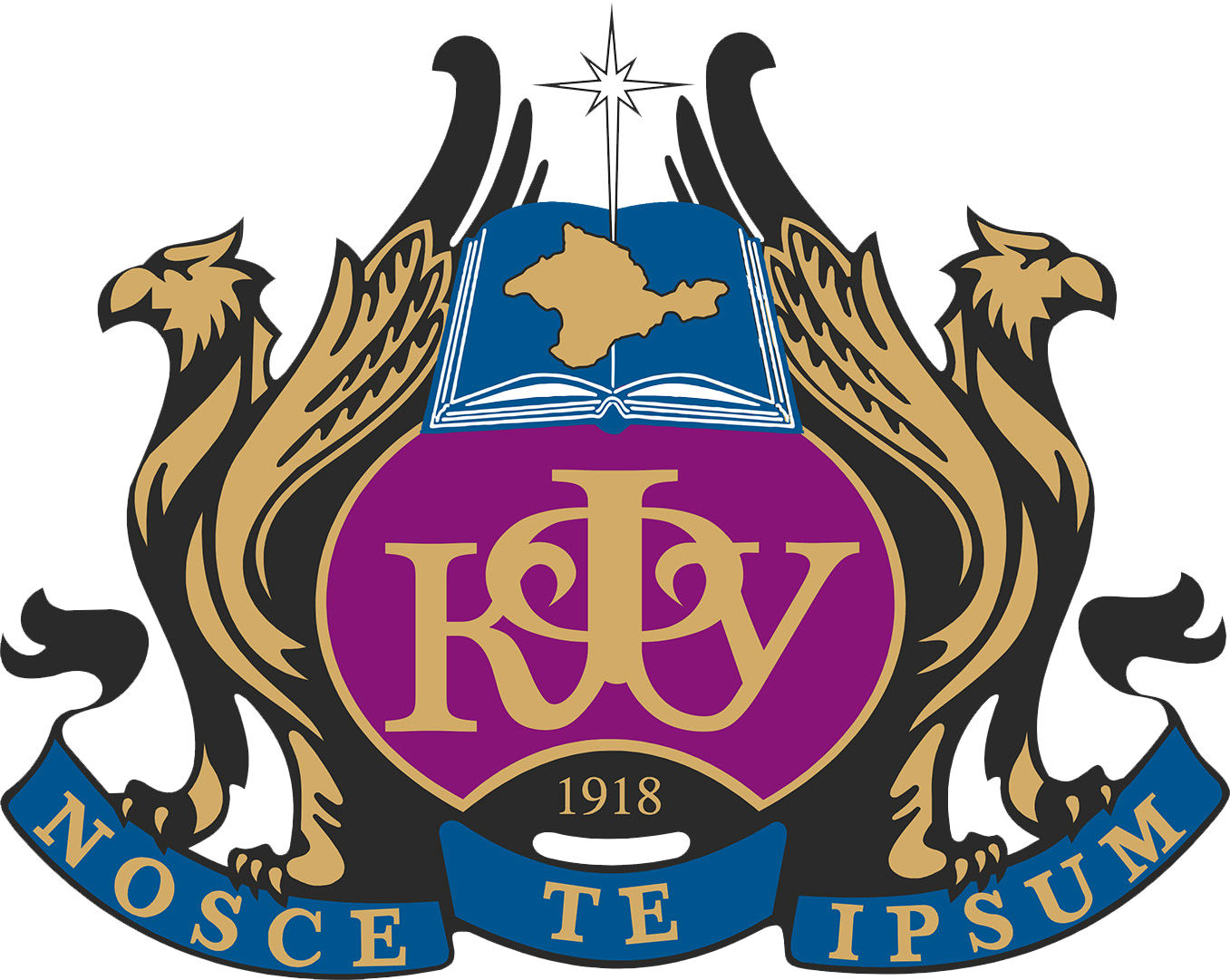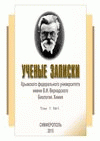In recent years, there has been an increase in publications devoted to the creation of new materials based on self-organized nanostructured composites of specified sizes and maintaining their stability for a long time. Nanosystems based on nanoselenium are of particular interest, as it is vital for humans and animals. However, in many regions of Russia, selenium deficiency is observed in agricultural soils. The least toxic and bioavailable is nanoscale selenium. Currently, the most widely used methods of chemical reduction of selenium ions in solutions using ascorbic acid, glucose, dithiourea and sulfur-containing amino acids. And high-molecular compounds are used as stabilizers, both natural (alginate, chitosan, arabinogalactan) and synthetic (polyethylene glycol, polyvinyl alcohol, polyvinylpyrrolidone). The aim of this work was the synthesis of self-organized selenium nanoparticles in a polyvinylpyrrolidone (PVP) matrix with different molecular weights. To establish the effect of the ratio of selenium–PVP components on the formation process, spectral and structural-morphological characteristics of selenium nanocomposites, as well as on their aggregative resistance to the environment. Selenium nanoparticles were obtained by chemical reduction of sodium selenite with L-cysteine, in the presence of PVP grade «Kollidon® 30» (K-30) and grade «Kollidon® 90 F» (K-90). The viscometric method was used to determine the medium-viscosity molecular weights of two PVP samples (grades K-30 and K-90). The control of the aggregate stability of the obtained selenium nanoparticles was carried out by spectrophotometric and potentiometric methods. As a result of this work, new bioactive systems based on selenium nanoparticles and a nonionic polymer – polyvinylpyrrolidone with different molecular weights were synthesized. The formation of selenium nanoparticles in the zero-valence state in aqueous solutions of PVP, which are sufficiently stable for 4–5 weeks, has been established by UV spectroscopy. It was found that the concentration and molecular weight of PVP do not significantly affect the structure and size of selenium nanoparticles, but affect the aggregate stability and «lifetime» of nanosystems.
nanoparticles, nanoselenium, cysteine, polymer stabilizers, polyvinylpyrrolidone, selenium-containing nanostructures.
1. Tretiak L. N. Specificity of selenium influence on human and animal's organism (with regard to the problem of creation of seleniumcontaining food stuff). Bulletin of the Orenburg State University, 12, 136
2. Golubkina N. A., Skalny A. V., Sokolov Ya. A. Selenium in medicine and ecology, 136 p. ("KMK", Moscow, 2006). (in Russ.)
3. Gromova O. A. Selenium – impressive results and prospects of use. Difficult patient, 14 (5), 25 (2007). (in Russ.).
4. Skrypnic L., Chupakhina G. He influence of selenium and zinc on oxidative stability of celery cabbage. Bulletin of the I. Kant Russian State University. Ser. Natural sciences. 7, 73 (2007). (in Russ.).
5. Golubkina N. A., Poluboyarinov P. A., Sindiryova V. A. Selenium in foods of plant origin. Problems in Nutrition. 86 (2), 63 (2017). (in Russ.). EDN: https://elibrary.ru/YKKEZB
6. Golubkina N. A., Sindireva A. V., Zaitsev V. F. Nterigional variability of the human selenium status. South of Russia: ecology, development, 12 (1), 107 (2017). (in Russ.). EDN: https://elibrary.ru/YIELCF
7. Kokhan S. T., Fefelova E. V., Maksimenya M. V., Tereshkov P. P., Krivosheeva E. M., Pateyuk A. V., Shantanova L. N. Recovery and antioxidant selenium-containing immune defense funds in experimental
8. Golubev W. I., Golubev N. W. Comparison of sodium selenite and selenate toxicity for saccharomyces complex. Problems in medical mycology, 9 (3), 34 (2007). (in Russ.). EDN: https://elibrary.ru/PENKMZ
9. Bhattacharjee A., Basu A., Bhattacharya S. Selenium nanoparticles are less toxic than inorganic and organic selenium to mice in vivo, Nucleus, 62, 259 (2019). https://doi.org/10.1007/s13237-019-00303-1. EDN: https://elibrary.ru/LCKATS
10. Shurygina I. A., Shurygin M. G. Selenium nanocomposites – the prospects of application in oncology. Journal of new medical technologies, 27 (1), 81 (2020). https://doi.org/10.24411/1609-2163-2020-16517 EDN: https://elibrary.ru/QOVPLB
11. Skorinova K. D., Kuzmenko V. V., Vasilenko I. A. Research and development of new drug products, 9 (2), 33 (2020). https://doi.org/10.33380/2305-2066-2020-9-2-33-44. (in Russ.).
12. Khurana A., Tekula S., Saifi M. A., Venkatesh P., Godugu C. Therapeutic applications of selenium nanoparticles, Biomed Pharmacother, 111, 802 (2019). https://doi.org/10.1016/j.biopha.2018.12.146. EDN: https://elibrary.ru/AJFQNV
13. Shurygina I. A., Dremina N. N., Trukhan I. S., Shurygin M. G. Selenium in nanoform: toxicity and safety. Baikal Medical Journal, 1 (1), 24 (2022). https://doi.org/10.57256/2949-0715-2022-1-24-32. (in Russ.).
14. Nayak V., Singh K., Singh A., Singh R. Potentialities of Selenium Nanoparticles in Biomedical Sciences. New J. Chem., 45, 2849 (2021). http://doi.org/10.1039/D0NJ05884J. EDN: https://elibrary.ru/VCRZVD
15. Zhang J., Taylor E. W., Bennett K., Saad R., Rayman M. P. Association between regional selenium status and reported outcome of COVID-19 cases in China. Am J Clin Nutr., 111(6), 1297 (2020)
16. Tananaev I. G., Folmanis G. E., Fedotov M. A., Kovalenko L. V. Production of colloidal solutions of selenium by dispersion methods. Bulletin of the Far Eastern Branch of the Russian Academy of Sciences, 5 (201),
17. Makarov S. V., Molodtsov P. A., Dereven'kov I. A., Naidenko E. V. Interaction of sodium selenite with sodium hydroxymethanesulfinate and thiourea dioxide in aqueous solutions. News of universities.
18. Li Q., Chen T., Yang F., Liu J., Zheng W. Facile and controllable one-step fabrication of selenium nanoparticles assisted by l-cysteine. Materials Letters, 64 (5), 614 (2010). DOI: https://doi.org/10.1016/j.matlet.2009.12.019; EDN: https://elibrary.ru/NWWCYL
19. Molodtsov P. A., Makarov S. V., Dereve’nkov I. A., Makarova A. S. Influence of proteins on the interaction between sodium selenite and sulfur-containing reductants. Izv. Vyssh. Uchebn. Zaved.,
20. Titova A. V., Borovikova L. N., Kipper A. I., Pisarev O. A. Stabilization of selenium nanoparticles by biologically active synthetic and natural polymers. In the collection: Science Week of SPbPU. Materials of the
21. Valueva S. V., Borovikova L. N., Kutin A. A., Plyushchenko A. V. Effect of the nature of nanoparticles and biocompatible polymer stabilizers on the sizes and spectral characteristics of hybrid nanosystems.
22. Panov D. A. Selenium and sodium alginate nanocomposites producing and properties, Scientific Notes of V.I. Vernadsky Crimean Federal University. Biology. Chemistry, 3 (1), 91 (2017). (in Russ.).
23. Panov D. A., Katsev A. M., Omelchenko A. V. Synthesis and properties of selenium nanoparticles in a natural polysaccharide matrix, Russian Journal of Bioorganic Chemistry, 49, 7, 1567 (2023). DOI: https://doi.org/10.1134/S1068162023070853; EDN: https://elibrary.ru/TSEURM
24. Lesnichaya M. V., Sukhov B. G. Synthesis of selenium sulfide nanoparticles in polysaccharide matrices of arabinogalactan and starch. Russian Nanotechnologies, 16 (2), 222 (2021). (in Russ.). DOI: https://doi.org/10.1134/S1992722321020096; EDN: https://elibrary.ru/GSOEEF
25. Bai K., Hong B., He J., Huang W. Antioxidant Capacity and Hepatoprotective Role of Chitosan-Stabilized Selenium Nanoparticles in Concanavalin A-Induced Liver Injury in Mice. Nutrients., 12(3),
26. Suzdalev I. P. Nanotechnology: physico-chemistry of nanoclusters, nanostructures and nanomaterials, 592 p. (URSS, 2019). (in Russ.).
27. Kirsh Yu. E. Poly-N-vinylpyrrolidone and other poly-N-vinylamides, 252 p. (Nauka, Moscow, 1998). (in Russ.).
28. Ostaeva G. Y., Isaeva I. Y., Grushina V. V., Stuzhuk A. N., Odinokova I. V. Influence of the molecular mass of poly(n-vinylpyrrolidone) on formation of Cu2O nanoparticles during reduction of divalent copper





